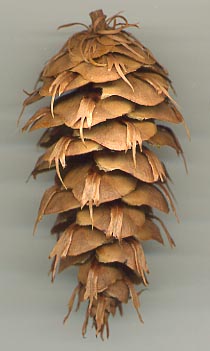David Douglas (botanist) facts for kids
Quick facts for kids
David Douglas
|
|
|---|---|
 |
|
| Born | 25 June 1799 Scone, Perthshire, Scotland
|
| Died | 12 July 1834 (aged 35) |
| Resting place | Honolulu, Hawaii |
| Citizenship | United Kingdom |
| Alma mater | University of Glasgow |
| Known for | Douglas fir |
| Scientific career | |
| Fields | Botany |
| Institutions | Glasgow Botanic Gardens, Royal Horticultural Society |
| Influences | William Jackson Hooker |
| Author abbrev. (botany) | Douglas |

David Douglas (born June 25, 1799 – died July 12, 1834) was a Scottish botanist. He is most famous because the Douglas fir tree is named after him.
David Douglas started his career as a gardener. He explored many places, including the Scottish Highlands, North America, and Hawaii. He sadly died in Hawaii.
Contents
David Douglas's Early Life
David Douglas was born in Scone, Perthshire, Scotland. His father, John Douglas, was a stonemason.
He went to Kinnoull School. After school, he became an apprentice to William Beattie. William was the head gardener at Scone Palace. David worked there for seven years.
He then studied plant science and math in Perth. Later, he worked at Valleyfield House in Fife. There, he could read many books about plants and animals.
David then moved to the Glasgow Botanic Gardens at Glasgow University. He also attended botany lectures. The director, William Jackson Hooker, was very impressed with David. He took David on a trip to the Scottish Highlands. Hooker then recommended David to the Royal Horticultural Society in London.
David Douglas's Amazing Journeys
David Douglas traveled from Britain to North America three times. His first trip was to eastern North America in 1823.
His second journey was to the Pacific Northwest from 1824 to 1827. This trip was his most successful. The Royal Horticultural Society sent him to find new plants. This journey became one of the greatest plant explorations ever.
In 1826, David Douglas climbed a peak called Mount Brown. He wanted to see the view from the top. He might have been one of the first Europeans to be a "mountaineer" in North America.
Plants David Douglas Discovered
David Douglas brought many new plants to Britain. In 1827, he introduced the famous Douglas fir tree.
He also introduced many other important trees. These include the Sitka Spruce and Sugar Pine. Other trees he found were the Western White Pine and Ponderosa Pine. He also brought the Lodgepole Pine, Monterey Pine, Grand Fir, and Noble Fir. These conifers changed the British landscape and timber industry.
He also found many garden shrubs and herbs. Some examples are the Flowering currant, Salal, Lupin, Penstemon, and California poppy. He once wrote that people might think he could "manufacture pines at my pleasure." He introduced about 240 plant species to Britain in total.
David Douglas first visited Hawaii briefly in 1830. He returned in December 1833. He was only the second European to reach the top of the Mauna Loa volcano.
David Douglas's Death
David Douglas died in Hawaii in 1834 when he was 35 years old. He was climbing Mauna Kea volcano. He reportedly fell into a pit trap and was attacked by a bull.
He was last seen alive at the hut of Edward "Ned" Gurney. Gurney was a bullock hunter. There were some questions about his death, but no clear evidence was found.
Douglas was buried in a shared grave in Honolulu. Later, a marker was placed at Kawaiahaʻo Church. A monument was also built where he died. It is called Ka lua kauka (meaning "Doctor's Pit"). A small group of Douglas fir trees has been planted there.
David Douglas's Legacy
The common name "Douglas fir" honors him. However, the tree's scientific name, Pseudotsuga menziesii, honors another botanist, Archibald Menzies.
Many Hawaiian plants were once named after him. For example, Pandanus tectorius, known as hala, was sometimes called Pandanus douglasii. A type of "horned toad," Phrynosoma douglasii, is also named after him. More than eighty species of plants and animals have douglasii in their scientific names to honor him.
He brought hundreds of plants to Great Britain and Europe. There is a memorial to David Douglas in his hometown of Scone. David Douglas High School and the David Douglas School District in Portland, Oregon are named after him.
Images for kids
See also
 In Spanish: David Douglas para niños
In Spanish: David Douglas para niños



